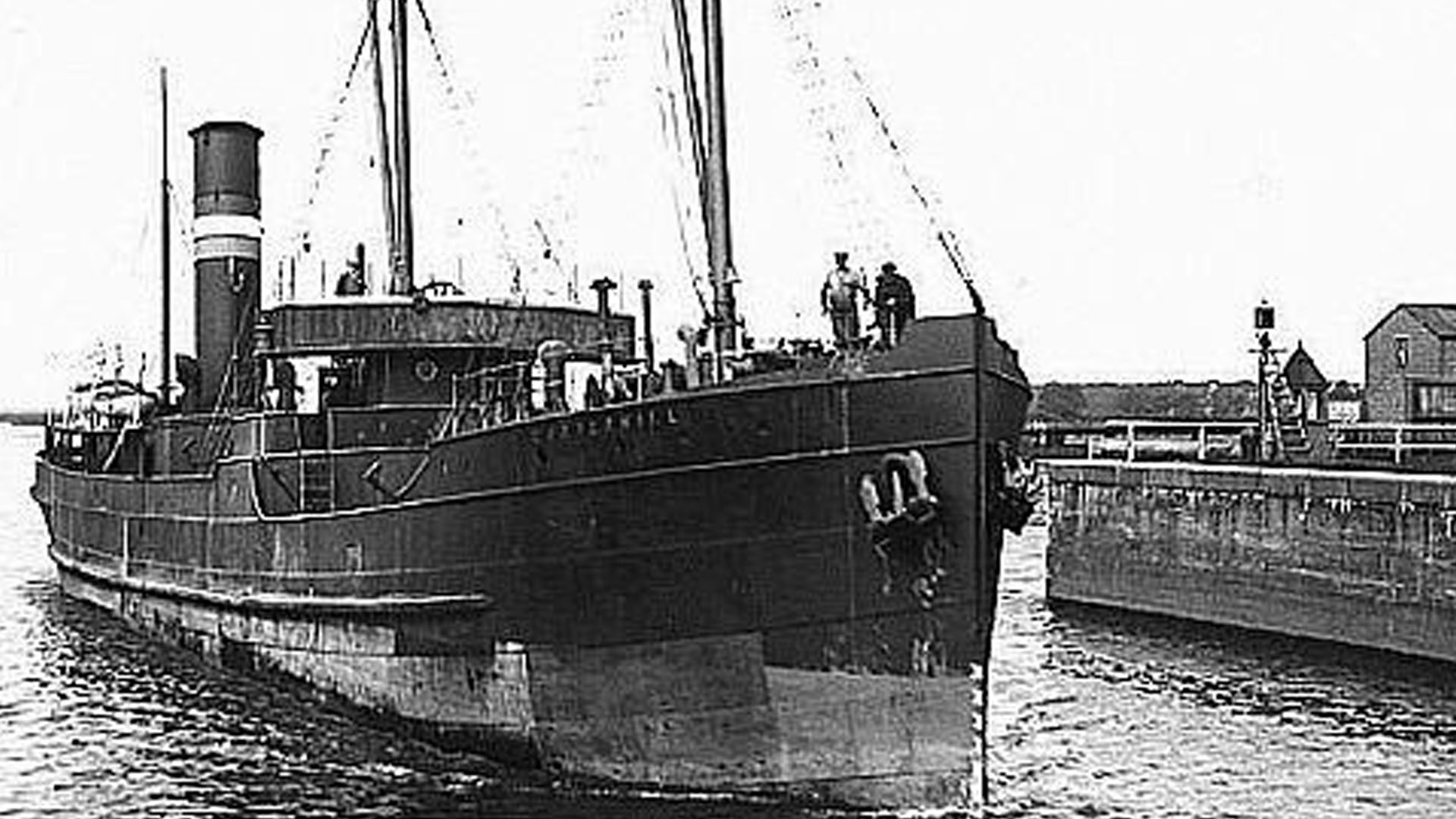Killyleagh War Memorial
Visitors who stay at Dufferin Coaching Inn visit for a number of reasons, whether it’s a local guest visiting for a short staycation, or visitors coming from further afield to build their family trees or walk in the footsteps of their ancestors. Our visitors immerse themselves in everything that County Down has to offer, from delicious locally-produced food, to the stunning scenery of Strangford Lough and its surrounding areas, and even the rich local history, in which the village of Killyleagh is steeped!
Not only is Killyleagh the home to one Ireland’s oldest inhabited castles which dates back to the 12th century, the village also has a legacy of brave men involved in World War II, which are commemorated on the Killyleagh War Memorial. Helping us uncover more information on the latter, Dufferin Coaching Inn invited Scott Edgar of WWII Northern Ireland to offer his insight on Killyleagh’s contribution to one of the most dramatic eras in our recent history.
A pair of marble tablets on the walls of Killyleagh Castle form Killyleagh’s war memorial. The first plaque graced the wall of the flank tower at Linden Walk, remembering those from The Great War of 1914-1918. The addition of a Second World War memorial saw it relocated to the junction of Frederick Street and Shrigley Road.
Made to the order of the Women's Work Guild, the marble commemoration depicts a shield and a wreath. During the First World War, the Women's Work Guild met weekly to distribute woollen garments, aid parcels, and medical kits to men on the front, and reports from the unveiling suggest that the service was "short and simple" – in typical local style. The memorial bears the following inscription relating to the 1939 - 1945 conflict: "In Honoured Memory of those of this district who gave their lives in the World War". Below are just some of the many stories of those men who gave their lives in Europe and beyond during World War Two.
Royal Navy Losses
Able Seaman John Anderson served in the Royal Navy and was tragically one of those on-board HMS Glorious during the aircraft carrier's notorious sinking on 8th June 1940. The truth behind the sinking is not yet known as a 100 year seal was placed on inquiry findings. Anderson was one of many men from Killyleagh and the surrounding area to serve in the Royal Navy and be lost at sea.
Born in Tullyverry, Killyleagh, leading Writer Robert Victor Berner, served on HMS Hood which was also sunk by The Bismarck in one of the Royal Navy's greatest wartime losses.
Imperial War Museum Photo: HU 76078 (Part of the Ministry of Information Second World War Press Agency Print Collection). The Royal Navy battleship HMS Hood in the middle distance viewed beneath the silhouetted 15" gun of HMS Renown. Photo taken by Topical press photographer.
On 15th February 1942, 32 year old leading Stoker William Alexander Dempster died on board HMS Cleopatra in the port of Valetta, Malta. Luftwaffe JU-88 bombers attacked the British ship, which made it back to port although twenty crew members died.
Able Seaman John Gilmore survived two previous torpedo attacks and returned from Dunkirk. Aged 24 years old, the naval man from Mayemore, Toye perished on HMS Grove in June 1942.
Also from Maymore, Toye was Able Seaman Samuel Rutherford Morrison who perished on board HMS Broadwater. A U-101 captained by Ernst Mengersen sank the former US Navy vessel in the North Atlantic south of Iceland.
The freezing waters of the North Atlantic claimed the life if Able Seaman Charles Kelly on 17th January 1942when the ill-fated HMS Matabele sank under fire.
Able Seaman Thomas Killops served at HMS President III, a shore base in Bristol. There, men trained to work on Defensively Equipped Merchant Ships. Killops was an observer on one such ship, the SS Roxby, on 7th November 1942, when U-613 struck it with torpedoes.
The Merchant Navy at war
The Merchant Navy also suffered great losses during the Second World War. Fireman James Alexander Fee died on 2nd March 1941 as a Heinkel HE111 attacked the SS Castlehill in the Bristol Channel. Fee was not the only Killyleagh man on board the SS Castlehill. Mate George McCormick also died on board the Belfast-built ship.
Merchant Navy cargo ship SS Castlehill sank in the Bristol Channel on 2nd March 1941 after a U-Boat torpedo attack. Copyright unknown.
Army losses in Italy and Africa
Not all men remembered on Killyleagh's War Memorial served in the Royal Navy or Merchant Navy. Captain John Eyre Gisborne Gordon, from one of County Down's most prominent families, served in the Royal Artillery. The Gordon family lived in Delamont House, Killyleagh. He succumbed to wounds sustained in the East Africa campaign in Sudan.
Lieutenant Samuel Morrow served in 6th Battalion, Royal Inniskilling Fusiliers. Hailing from Shrigley, on the outskirts of Killyleagh, he died in house-to-house combat as the Irish Brigade fought in Sicily.
Imperial War Museum Photo: NA 5388 (Part of the War Office Second World War Official Collection). Men of the 6th Battalion, Royal Inniskilling Fusiliers, 38th Irish Brigade, searching houses during mopping up operations in Centuripe, Sicily in August 1943. Photo taken by Captain Richard Felix Gade - No 2 Army Film and Photographic Unit.
David McDowell was a Private in the 4th Battalion, King's Own Scottish Borderers. He died on 3rd April 1944 at the age of 23 years old.
The War in the skies
With war also raging in the skies, many men from County Down enlisted in the Royal Air Force. Sergeant Samuel Hugh Albert Jess of Plantation Street, Killyleagh was only 19 years old when he died on a mission to Hamburg, Germany in 1941. He had spent Christmas at home with his family the previous year.
Leading Aircraftman Thomas Martin Thompson was the oldest of the six children of William John Thompson. He died on 17th February 1940 in the skies over France.
The names of Patrick Doyle, Francis Hannity, William Murphy, Frederick J Perry, Harry Rooney, Alexander Withers also feature on the Killyleagh War Memorial. To date, no further information on their service is available. Their names, as well as those in the Royal Navy, Merchant Navy, Royal Air Force, and British Army live on in the County Down town.
Killyleagh was one of many Northern Irish towns in which the citizens gave their lives in the face of Nazi oppression, and for the size of this quaint village, it’s easy to imagine the tremendous impact these local deaths must have made on the families and communities within it. Many of the family names above can still be found in the houses and businesses of the Killyleagh area, and – working with local preservation and historical societies we are always happy to connect our visitors with their roots. Additional resources on genealogy in the local area can be found here:
World War Two Northern Ireland
Killyleagh Family Historical Society




